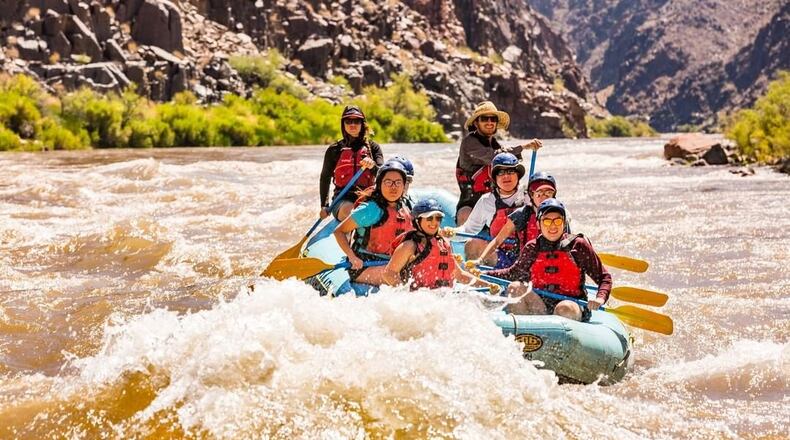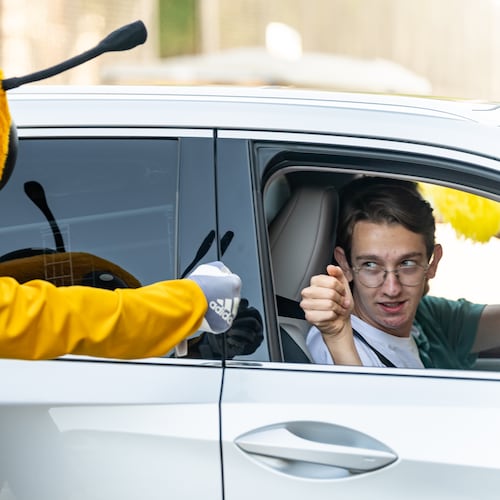Chris Balme, author of the bestselling “Finding the Magic in Middle School,” offers an apt comparison for the tumultuous adolescent years: river rafting. “Adolescents go back and forth between this is awesome and I can fall out of the boat at any second. It is incredibly fun and really scary,” said Balme of the much-maligned middle school period.
In Balme’s metaphor, parents remain on the shore, watching their children navigate the river and feeling cast aside.
“Kids are not suddenly waking up and thinking we don’t care about adults. Their brain is making their peers more and more interesting. It could be their friend just fell out of the boat or there is a boulder coming up and they are paddling like crazy to get around it,” said Balme, speaking at the national gathering of the Collaborative for Academic, Social, and Emotional Learning.
The SEL Learning Exchange brought 1,800 educators and counselors to Atlanta earlier this month to learn how to help children become self-aware, caring, responsible and engaged. This year’s conference had an added agenda item — how educators can continue to address children’s well-being and mental health amid charges that SEL is liberal indoctrination that doesn’t have a place in classrooms.
As founder of the National Parents Union, Keri Rodrigues is aware of the protests over social and emotional learning, some of which occurred in metro Atlanta. Just last week, at a Moms for Liberty organizing forum in Duluth, Holly Terei, Gwinnett leader of the conservative group No Left Turn in Education and one of four parents who sued the district and Superintendent Calvin Watts in 2021 to void the mask mandate, told a panel of Republican lawmakers, “Social emotional learning taps into the innermost corners of a child’s mind that should only be formed through the worldview that the parents decide. ... We need to get social emotional learning out of our schools.”
“I can’t emphasize enough how helpful social and emotional learning is for American families,” said Rodrigues while at the Atlanta SEL conference. “Our kids are not OK; this is a deeply troubling moment for our children who are struggling to figure out big feelings. ... We desperately need more social and emotional learning, not less.”
As the leader of two innovative California middle schools, Balme wrote his book to tell parents they can help their children and themselves survive middle school if they understand adolescent neuroscience. Middle school is not the worst time in life, he said, but the worst understood.
Credit: Courtesy photo
Credit: Courtesy photo
Three currents flow through middle schoolers that schools and parents must build on rather than battle, said Balme, who lives in Northern California. Adolescents are driven to discover who they are, how to connect with others and how to make meaningful contributions.
Social and emotional learning represents the most critical set of skills schools can teach to this age and what the adolescent brain is most primed to learn, said Balme. “In many ways, middle schoolers are identity scientists,” said Balme. “They are running a series of experiments designed to help them figure out what is authentic to them. We have to help create conditions for good scientific work. Their job is to be able — without harming anyone, without being shamed or blamed — to try out different identities.”
These evolutions and transformations may worry parents who can’t tell if their kids are going through a phase or becoming someone they don’t want them to be. But parents ought to remember, “Today’s experiment might be done tomorrow,” said Balme.
“That age — 11 to 16 — is the last big burst of brain growth,” he said. “Early adolescents are newborn adults. They have a lot of the hardware that adults have but are just figuring out how to use it.”
Middle school ought to be a safe place for kids to learn how to be human around other humans, said Balme, explaining, “Their social radar has activated. They have high perception skills, almost equivalent to an adult, but low interpretation skills. They are picking up on the sour expression of someone in the hallway but can’t tell whether that person hates them or they just have a stomachache.”
Their brain chemistry compels adolescents to concentrate on peers. “If you imagine middle schoolers around both peers and adults, we adults are in a black-and-white movie and what we say is in captions. Their peers are a full color, surround sound, immersive experience,” said Balme.
To understand their middle school child, Balme advises parents “to tunnel back and understand their own middle school self. If we repress our own adolescent journey, we are going to suppress theirs as well. They are transforming at every level that a human can possibly transform. We get settled in our ways and forget what it is to transform.”
As parents see their kids negotiating the rapids of middle school, Balme advised, “If you work with those currents rather than trying to fight against them, it is a wild experience to watch someone transform.”
About the Author
Keep Reading
The Latest
Featured



